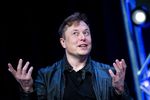The road not taken: South Korea's self-driving professor - Tech ...
←
→
Page content transcription
If your browser does not render page correctly, please read the page content below
The road not taken: South Korea's self-
driving professor
2 April 2021, by Claire Lee
"The workload was very heavy," but he and his
team "had an enormous passion as it was
something others hadn't done yet, something that
hadn't come out in the world yet".
At the time, South Korea was more focused on
heavy industry, such as steel and shipbuilding, with
the average Korean not yet familiar with
cellphones.
The country was yet to become the tech
powerhouse it is today, and was still pursuing
imitation rather than innovation. On one occasion,
Han was told: "Why develop a new technology
when you can always pay for it?"
Han Min-hong successfully tested his self-driving car in
1993—a decade before Elon Musk even founded Tesla
Decades before the race to build a self-driving car
became a multi-billion-dollar contest between tech
giants such as Tesla and Google, a South Korean
professor built an autonomous vehicle and test-
drove it across the country—only for his research to
be consigned to the scrapheap.
Han Min-hong, now 79, successfully tested his self-
driving car on the roads of Seoul in 1993—a decade
before Tesla was even founded.
Two years later, it drove 300 kilometres (185 miles) By the mid-1990s, an autonomous vehicle built by South
Korean Han Min-hong could drive 300 kilometres (185
from the capital to the southern port of Busan, on
miles) from Seoul to Busan
the most heavily-travelled expressway in South
Korea.
Footage from the period shows the car barrelling Han's projects were seen as dangerous. He was
down a highway, with no one behind the wheel. A once asked how much he was paying for his life
386-chip-powered desktop computer, complete insurance, he said, and whether his wife was aware
with monitor and keyboard, is placed on the of "these crazy activities of yours?"
passenger seat. Han is sitting in the back, waving
at the camera. But Han was so convinced of his cars' safety that
he rarely wore a seat belt—and has never had life
"It felt extraordinary," said the affable inventor. insurance.
1/4Even so, unable to see much investment potential, "It is unfortunate that funding for that project was
the government eventually cut funding to his cut. In hindsight, that was certainly not a wise
research at Korea University. decision."
Now, Elon Musk's electric car firm Tesla is a Musk challenge
$600-billion behemoth, while Han's Chumdancha is
a small company in Yongin, south of Seoul, where Korea University describes Han as "a pioneer and
he and one other employee still develop specialist hero in the global field of artificial intelligence", who
warning systems for autonomous vehicles. is known for developing the South's first automotive
navigation system and a mini-helicopter seen as a
Musk is a "tremendous and outstanding" person, precursor to modern-day drones, as well as his
Han said. "He came up with his own, firm vision autonomous vehicle work.
based on what others were doing, and that is really
incredible." He is seen in the South as a genius ahead of his
time—the 1990s footage has been viewed more
But Han's invention could have paved the way for than 1.5 million times since it was posted to
South Korea to dominate the industry, he added YouTube in February.
regretfully.
Elon Musk's electric car firm Tesla is worth $600 billion
The South Korean government did not see investment
potential in Han Min-hong's autonomous driving car and
cut funding to his research
Self-driving vehicles are a major technological
battleground for today's automakers, with
technology giants like Google parent Alphabet
Raj Rajkumar, an engineering professor at spending billions of dollars in a market that is
Carnegie Mellon University's Robotics Institute, supposed to fuel vehicle sales.
who reviewed the 1990s footage for AFP, said it
"appears to be on par with some of the best work Tesla said last year it was "very close" to achieving
on autonomous vehicles during that period". Level 5 autonomous driving technology—which
indicates essentially total autonomy.
"The professor and a colleague are not even in the
driver's seat—very bold, confident but very risky But Han insists the American firm's current
thing to do," he added. offerings are effectively comparable to his 1990s
work.
2/4"As Tesla is regarded as the best car in the world, if
there is a chance, I would like to compare our
technology to theirs."
He suggested a challenge on the Bugak Skyway, a
twisting, narrow road that runs over a mountain in
northern Seoul.
"Of course Tesla's invested a lot of money in
testing, so it might be much better when it comes to
sophistication," he told AFP. "But there shouldn't be
much difference when it comes down to basic
functionality."
Han Min-hong insists Tesla's current offerings in
automated cars are effectively comparable to his 1990s
work
Even so, Han believes there are limits to what self-
driving technology can achieve, and that true
autonomy is beyond reach.
Neural networks do not have the flexibility of
humans when faced with a novel situation that is
not in their programming, he said, predicting that
self-driving vehicles will largely be used to transport
goods rather than people.
"Computers and humans are not the same," he
added.
© 2021 AFP
APA citation: The road not taken: South Korea's self-driving professor (2021, April 2) retrieved 21
3/4October 2021 from https://techxplore.com/news/2021-04-road-south-korea-self-driving-professor.html
This document is subject to copyright. Apart from any fair dealing for the purpose of private study or research, no
part may be reproduced without the written permission. The content is provided for information purposes only.
4/4
Powered by TCPDF (www.tcpdf.org)You can also read






















































